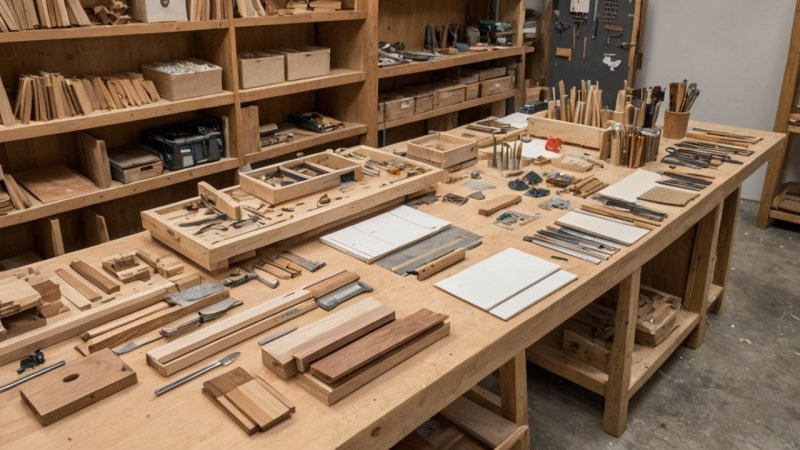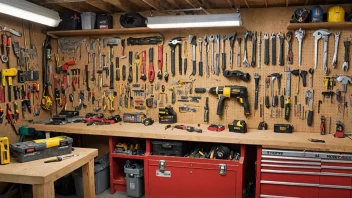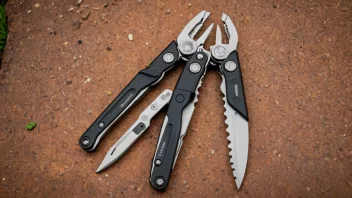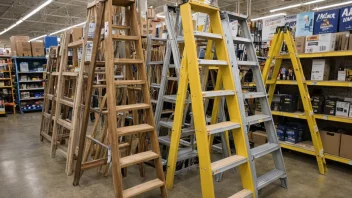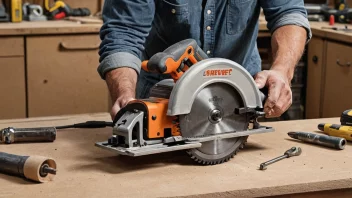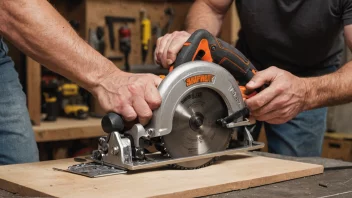Wood has been an essential material in human civilization for thousands of years, utilized in everything from furniture and flooring to tools and construction. With numerous species of trees available, each type of wood possesses unique characteristics that determine its suitability for specific applications. In this article, we will delve into the different types of wood, exploring their properties, best uses, and how to choose the right wood for your projects. Whether you are a seasoned DIY enthusiast or just starting, understanding these wood types will enhance your craftsmanship and help you make informed decisions.
Types of Wood
Wood can be categorized broadly into two types: hardwoods and softwoods. Each category has its own set of characteristics and uses. Let’s explore these two main classifications.
Hardwoods
Hardwoods come from deciduous trees, which lose their leaves annually. They are generally denser and more durable than softwoods, making them ideal for furniture, flooring, and cabinetry.
- Oak: Known for its strength and durability, oak is popular in furniture and flooring. Its attractive grain patterns make it a favorite for decorative applications.
- Maple: Maple is a hard and dense wood that resists wear and tear. It’s commonly used for kitchen utensils, furniture, and cabinets.
- Cherry: Cherry wood is valued for its rich color and smooth grain. It darkens naturally over time, enhancing its aesthetic appeal.
- Walnut: Walnut is a premium hardwood known for its dark, deep color and beautiful grain. It’s often used in high-end furniture and cabinetry.
Softwoods
Softwoods are derived from coniferous trees, which typically remain evergreen. Softwoods are generally lighter and easier to work with, making them suitable for various applications, including construction and crafting.
- Pine: Pine is one of the most common softwoods. It’s lightweight, easy to work with, and relatively inexpensive, making it a popular choice for furniture and construction.
- Cedar: Known for its aromatic properties and natural resistance to decay, cedar is often used in outdoor furniture, fencing, and shingles.
- Spruce: Spruce is light and strong, commonly used in construction, particularly for framing and plywood.
- Fir: Fir is known for its strength and stability, making it ideal for structural applications, such as beams and posts.
Choosing the Right Wood for Your Project
When selecting wood for your projects, consider the following factors:
1. Purpose of the Project
Determine the intended use of the wood. For example, if you’re building outdoor furniture, choose a wood resistant to moisture and pests, like cedar. For indoor furniture, hardwoods like oak or cherry may be more suitable.
2. Aesthetic Preferences
Different wood types offer various colors and grain patterns. Consider how the wood will complement your existing decor. For instance, walnut’s rich tone can add warmth to a space, while maple’s light color can create a more modern look.
3. Durability and Maintenance
Some woods require more maintenance than others. Hardwoods, while durable, may need periodic refinishing to maintain their appearance. Softwoods may be more susceptible to scratches and dents but are often easier to repair.
Common Applications of Wood Types
Let’s dive deeper into specific applications for various wood types:
Furniture
Hardwoods are often preferred for furniture due to their durability and aesthetic appeal. Oak, cherry, and walnut are commonly used for dining tables, chairs, and cabinets. Softwoods, like pine, can be used for more casual furniture pieces.
Flooring
For flooring, hardwoods such as oak, hickory, and maple offer durability and a timeless look. Engineered wood flooring, which can be made from a combination of hardwood and softwood layers, provides a more affordable and stable option.
Cabinetry
In kitchen and bathroom cabinetry, hardwoods are frequently used for their strength and beauty. Maple and cherry are popular choices for their smooth finishes. For budget-friendly options, consider plywood with a hardwood veneer.
Woodworking and Crafts
Softwoods like pine and cedar are often used in woodworking projects, as they are easier to cut and shape. Ideal for beginners, they are perfect for making shelves, birdhouses, and other small items.
Advantages and Disadvantages of Different Wood Types
Understanding the pros and cons of each wood type can help you make informed choices for your projects.
Hardwoods
- Advantages: Durable, attractive grain, and suitable for high-quality furniture.
- Disadvantages: Generally more expensive and can be challenging to work with due to density.
Softwoods
- Advantages: Lightweight, easy to work with, and more affordable.
- Disadvantages: Less durable, can be more prone to scratches and dents.
Maintenance Tips for Wooden Projects
To prolong the life of your wooden projects, follow these maintenance tips:
1. Regular Cleaning
Dust your wooden furniture regularly with a soft cloth to prevent dirt buildup. For deeper cleaning, use a damp cloth with a gentle cleaner designed for wood.
2. Avoid Excess Moisture
Keep wooden items away from excess moisture, as it can cause warping and damage. Use coasters under drinks and wipe up spills immediately.
3. Periodic Refinishing
Hardwoods may require refinishing every few years to maintain their appearance. Sand the surface lightly and apply a suitable wood finish to restore its beauty.
Conclusion
Understanding the various types of wood and their best uses is essential for any DIY enthusiast or craftsman. By selecting the right wood for your projects, you can enhance the durability, aesthetic appeal, and functionality of your creations. Whether you opt for the strength of hardwoods like oak and cherry or the versatility of softwoods like pine and cedar, knowing how to choose and maintain wood will undoubtedly lead to successful results in your woodworking endeavors.
